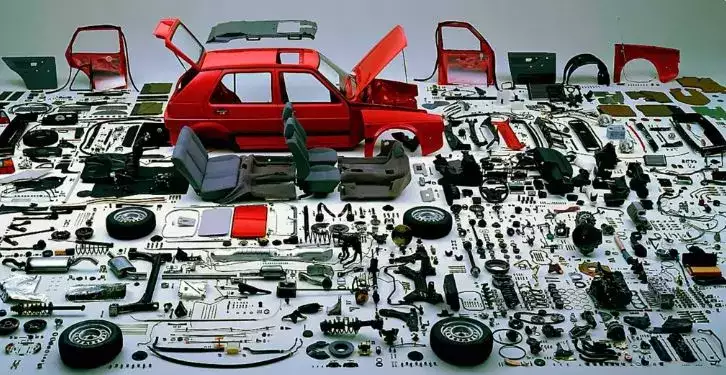
The Indian auto component industry is projected to see a revenue growth of 5-7% in FY2025, following a strong 14% growth in FY2024, as per the latest report by ICRA. The industry's operating margins are expected to improve by approximately 50 basis points year-on-year due to better operating leverage, increased content per vehicle, and added value. However, these margins remain vulnerable to sharp fluctuations in commodity prices and foreign exchange rates.
Investment in the industry is also anticipated to be robust, with projected capital expenditures (capex) between INR 20,000-25,000 crore in FY25, aimed at capacity expansion and technological developments. Capex is expected to account for around 8-10% of operating income in the medium term, with contributions from the PLI scheme towards advanced technology and electric vehicle (EV) components.
"Demand from domestic original equipment manufacturers (OEM) constitutes over 50% of sales for the Indian auto component industry and the pace of growth in the segment is expected to moderate in FY25. Growth in replacement demand is pegged at 5-7%, after two to three years of healthy growth, following a relatively weak Q1 in the current fiscal.
Exports, which account for close to 30% of the industry’s revenues, are likely to be impacted by subdued growth in end-user markets. Nevertheless, ancillaries will benefit from supplies to new platforms as the global OEMs diversify their vendor base and increase outsourcing," said Vinutaa S, Vice President and Sector Head – Corporate Ratings, ICRA Limited.
The expected moderation in revenue growth in FY25 is largely attributed to slowing growth in the domestic OEM segment. On the export front, new vehicle registrations in Europe and the US are anticipated to remain tepid over the next few quarters due to a weak global macroeconomic environment and geopolitical tensions. However, Indian auto component exporters are expected to benefit from increased supplies to new platforms owing to vendor diversification efforts by global OEMs/Tier-I players and higher value additions, partly due to increased outsourcing.
There are also opportunities for Indian players in metal casting and forgings as European Union plants face viability issues leading to their winding up. The aging of vehicles and increased sales of used vehicles globally are expected to boost exports of components for the replacement segment in overseas markets. ICRA anticipates steady growth for auto component suppliers over the medium-to-long term, driven by electric vehicle (EV) linked opportunities, premiumisation of vehicles, a focus on localisation, and changes in regulatory norms.
Further disruptions along the Red Sea route have led to a surge in container rates by 2-3 times in YTD CY2024 compared to CY2023, with shipping times also increasing by approximately two weeks. Given that about two-thirds of auto component exports are sent to North America and Europe, and one-third of imports are from these regions, a sharp and prolonged increase in freight rates could impact margins for these players in the upcoming quarters.
The liquidity position of the industry remains comfortable, particularly among tier-I players supported by stable cash flows and earnings. ICRA expects the sector's coverage metrics to stay stable, aided by healthy accruals and relatively low incremental debt despite a rise in borrowing costs. Most auto ancillary players rated by ICRA fall within the investment grade, indicating a healthy credit profile owed to stable cash accruals and comfortable debt levels. Since FY2022, rating upgrades have outnumbered downgrades, reflecting an improved credit profile over the past several quarters.
Currently, only 30-40% of the EV supply chain is localised. Chassis components requiring minimal technology upgrades are manufactured locally. There has been significant localisation in traction motors, control units, and battery management systems over the years. However, battery cells, which make up 35-40% of vehicle cost, are still entirely imported. The relatively low localisation level presents manufacturing opportunities for domestic auto component suppliers.
The EV policy 2024 for electric four-wheelers is expected to generate incremental demand for component makers due to the mandated domestic value addition. For parts already used in internal combustion engine (ICE) vehicles, there could be technological advancements in certain cases, resulting in higher content per vehicle. Ancillaries might also find opportunities in manufacturing components for other alternate fuel vehicles as their penetration grows.
ICRA projects that EVs will account for about 25% of domestic two-wheeler (2W) sales and 15% of passenger vehicle sales by 2030, representing a strong market potential for EV components by the end of the decade. The transition to EVs may affect the demand for engine and drive transmission components and could also impact aftermarket demand due to fewer moving parts in EVs. However, supplies to alternative applications, new products, and export opportunities are expected to mitigate this impact to some extent. The EV migration is predicted to be gradual, ensuring that ICE components will continue to have substantial demand over the medium term.
Commenting on the investment scenario, Vinutaa added, "ICRA’s interaction with large auto component suppliers indicates that the industry has incurred a capex of over INR 20,000 crore in FY2024 and is estimated to spend another INR 20,000-25,000 crore in FY2025. The incremental investments would be made towards new products, product development for committed platforms, and the development of advanced technology and EV components, apart from capex for capacity enhancements and upcoming regulatory changes. R&D, though, is still at an average of 1-3% of operating income, significantly lower than the global counterparts. ICRA expects auto ancillaries’ capex to hover around 8-10% of operating income over the medium term, with the PLI scheme also contributing to accelerating capex towards advanced technology and EV components."
The Indian auto component industry is thus navigating a landscape of moderate growth, logistical challenges, and changing market demands, supported by steady investments and a healthy credit profile.
Disclaimer: The copyright of this article belongs to the original author. Reposting this article is solely for the purpose of information dissemination and does not constitute any investment advice. If there is any infringement, please contact us immediately. We will make corrections or deletions as necessary. Thank you.





